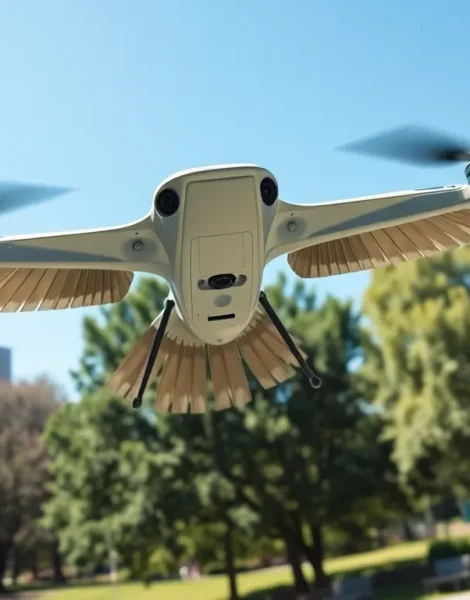Imagine a world where technology effortlessly mimics nature. Drones that look like birds aren’t just a fantasy, they’re steadily taking flight in our society. With the perfect blend of innovation, creativity, and a sprinkle of engineering wizardry, these avian marvels are not only stealing our hearts but also redefining the future of aerial technology. Today, we’re diving into these fascinating creations and exploring how they are transforming the skies, all while keeping the feel of a Sunday stroll through the park. Let’s soar.
Table of Contents
ToggleThe Evolution of Bird-Like Drones

Bird-like drones, or biomimetic drones, represent the forefront of drone technology. The journey began in the early 2000s when researchers realized that studying birds could unlock the secrets of efficient flight. These engineered marvels have evolved significantly, progressing from simple flying models to complex designs resembling actual birds, complete with feathers and flapping wings.
In 2011, the University of California showcased a crow-like drone called the ‘CROW’. It was groundbreaking yet a modest beginning in the realm of avian robotics. Fast forward to today, companies are now able to replicate the flight dynamics of birds using advanced materials and simulations. With continuous innovations from various institutions, the evolution of bird-like drones is just getting started.
Key Design Features of Avian Drones
Bird-like drones are noted for distinct design features that set them apart. They exhibit:
- Flapping wings: Mimicking natural flight mechanics allows for enhanced maneuverability.
- Weight distribution: Proper balancing is crucial. These drones are often built with lightweight materials, ensuring they can glide through the air with minimal effort.
- Feather-like structures: Some models incorporate flexible materials that mimic feathers, creating a more natural flight pattern and improving aerodynamics.
These features increase effectiveness and make them less detectable, especially vital in environments requiring discretion.
Applications of Bird-Like Drones
The potential applications for bird-like drones are as vast as the skies they navigate. Here are a few key areas where they shine:
- Surveillance: Military and security operations use these drones for surveillance in urban settings where traditional drones might draw attention.
- Wildlife Monitoring: Researchers leverage avian drones to observe animals without disturbing their natural habitats.
- Search and Rescue: In emergency situations, they can navigate challenging terrains to locate missing persons or deliver supplies.
- Advertising: Innovative companies are employing these drones as flying advertisements, mimicking birds and capturing the attention of potential consumers.
Advantages Over Traditional Drones
Bird-like drones boast several advantages compared to traditional UAVs.
- Stealthy operations: Their bird-like appearance means they blend into natural surroundings, making them less likely to be noticed.
- Energy efficiency: The flapping mechanism can allow for longer flight times, optimizing energy use compared to typical quadcopters.
- Enhanced agility: Mimicking birds provides agility that traditional drones often struggle to achieve, especially in tight spaces.
Challenges and Limitations
Even though their promising features, bird-like drones face several challenges.
- Complex technology: Designing and building these drones requires advanced engineering and research, making them more expensive than traditional counterparts.
- Vulnerability to weather: Flapping wing designs might not hold up well in adverse weather, affecting their operational reliability.
- Public perception: Skepticism about their capabilities and privacy concerns can hinder widespread acceptance among the general public.
Future Trends in Bird-Like Drone Technology
The future looks bright for bird-like drones. Innovations are on the horizon.
- Improved AI integration: As artificial intelligence continues to advance, these drones can become smarter, enhancing their navigation systems and operational capabilities.
- More efficient materials: Research into bio-inspired materials will further improve aerodynamics and durability, leading to more robust designs.
- Broader applications: Expect to see them in agriculture, environmental monitoring, and disaster recovery efforts as capabilities expand.









